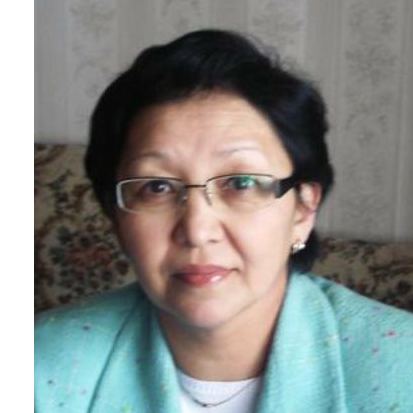Көміртекті материалдар бетінің анизотропиясы
DOI:
https://doi.org/10.31489/2021No3/15-24Кілт сөздер:
алмаз, графит, карбин, фуллерендер, наноқұрылымды, беткі қабаттың қалыңдығы, беттік энергия, анизотропия.Аңдатпа
Жұмыста жетілген монокристалдардың беттік қабатының моделі қолданылады және көміртегі материалдарының наноөлшемді облысында өтетін физикалық процестердегі беттік энергияның рөлі анықталды. Олардың ішінде гауһар, графит, карбин және фуллерендер зерттелген. Кубтық симметриялы алмастың беттік қабатының қалыңдығы 8,2 нм құрайды және наноқұрылым болып табылады. Синтезделген наноалмаздың орташа өлшемі ~ 8 нм реттілікке ие. (100), (110) және (111) алмас жазықтарына есептеген σhkl мәні экспериментпен және басқа есептеулермен жақсы үйлеседі. а осі бойындағы графиттің беттік қабатының қалыңдығы R(I)a = 8.0 нм-ге тең, сонымен қатар наноқұрылым болып табылады. Бірақ с осі бойында қабаттың қалыңдығы шамамен 1,5 нм құрайды, ал моноқабаттар саны тек 2-ге тең. Бұл с осінде графитті графенге айналдырып, моноқабат құруға болады. Графиттің а және с жазықтықтары бойынша есептеген σhkl мәні сәйкесінше 25957 және 5515 мДж/м2 құрайды. Карбиндер sp -будандастырылған көміртек атомдарынан тұратын полимерлі полиинді немесе кумулен тізбегі болып табылады. Егер карбиннің беттік қабатының қалыңдығы с осі бойымен бір өлшемді тізбекке созылған деп есептесек, онда α-карбин үшін бұл тізбектің ұзындығы 200 нм-ге дейін құрайды. Фуллерендердің беттік қабатының қалыңдығы таза металдардың беттік қабатының қалыңдығынан едәуір асып түседі. С84 және С96 фуллерендердің беттік қабатының қалыңдығы Глейтер бойынша наноқұрылымдарға тән 100 нм-ден асады. Фуллерендердің σhkl беттік энергиясы көміртегі атомдарының саны С36 → С96 артқан сайын жоғарылайды. Ол (111) → (100) → (110) қатарларында да өзгереді.
References
"1 Yurov V.M., Oleshko V.S. The impact of the environment on the contact potential difference of metal machine parts. Eurasian Physical Technical Journal. 2019. Vol.16, No. 1(31), pp. 99 – 108.
Yurov V.M., Makeeva O.V., Oleshko V.S., Fedorov A.V. Development of a device for determining work electron output. Eurasian Physical Technical Journal. 2020, Vol.17, No. 1(33), pp. 127 – 131.
Yurov V.M., Goncharenko V.I., Oleshko V.S. Anisotropy of the surface of cubic body-centered crystal lattices. Eurasian Physical Technical Journal, 2021, Vol.18, No. 1(35), pp. 9-15.
Bochkarev V.P. Development of physical and chemical principles for assessing the effect of surface energy on the properties of materials and processes for microelectronic technology. Dissertation for degree of Doctor of Technical Sciences, Moscow, 2020, 299 p.
Yurov V.M., Goncharenko V.I., Oleshko V.S. Anisotropy of surface energy and thickness of the surface layer of magnetic nanostructures. Nano- and microsystem technology, 2021, V. 23, No.2, pp. 8-14.
Yurov V.M., Goncharenko V.I., Oleshko V.S. Anisotropy of the surface layer of d - elements. Modern high technologies. 2021, No. 2, pp. 88-93.
Orlov Yu.L. Mineralogy of diamond. Moscow: Nauka, 1984, 70 p.
Bullakh A.G., Zolotarev A. Atlas of structures of minerals - simple substances, sulfides. St-Petersburg, I997, 28 p.
Liopo V.A., Ovchinnikov E.V., Sabut A.V., Voznyakovsky A.A. Structural features of diamond nanocrystals. Progressive technologies and systems of mechanical engineering, 2017, No. 1 (56), pp. 73-84.
Наrkins W. D. Energy Relations of surface of Solids. Journal Chem. Phys., 1942, V. 10, pp. 268–272.
Nozhkina A.V., Kostikov V.I. Surface energy of diamond and graphite. Rock-cutting and metal-working tools - technique and technology of its manufacture and application, 2017, No. 20, pp. 161-167.
Ormont B.F.Introduction to physical chemistry and crystal chemistry of semiconductors. Moscow, 1968, 487p.
Oshcherin B.N. On surface energies of ANB8-N semiconducting compounds. Phys. Status Solidi, 1976, A 34, No. 2, pp. K 181-К186.
Magomedov M.N. On the surface properties of nanodiamonds. Physics of the Solid State, 2010, Vol. 52, No. 6, pp. 1206 – 1214.
Zhmurikov E.I., Bubnenkov I.A., Pokrovsky A.S., Kharkov D.V., Dremov V.V., Samarin S.I. Graphite in Science and Nuclear Engineering. Novosibirsk, 2013, 198 p.
Kudryavtsev Yu.P., Evsyukov S., Guseva M., Babaev V., Khvostov V. Chemistry and Physics of Carbon: A Series of Advances. New York-Basel-Hong Kong: Marcel Dekker, Inc., 1997, Vol. 25, pp. 1 – 65.
Kasatochkin V.I., Savransky V.V., Smirnov B.N., Melnichenko V.M. Study of Carbyne Condensed from Carbon Vapors. DAN SSSR, 1974, Vol. 217, No. 4, pp. 796 – 799.
Korobova Yu.G., Bazhanov D.I., Khvostov V.V., et al. Effect of hydrogen impurity on the atomic and electronic structure of the crystalline modification of carbyne. VMU. Series 3. Physics. Astronomy. 2013, No. 1, pp. 37-44.
Zeynalov E.B. Fullerenes: Information Collection (1991-2006). Baku: ""Nurlan"", 2007, 521p.
Kovalenko V.I., Khamatgalimov A.R. Structure and stability of higher fullerenes. Moscow, RAS, 2019, 212 p.
Shpilevsky E. Fullerenes -new molecules for new materials. Science and Innovation, 2006, No.5(39), pp.32-38.
Magomedov M.N. About fullerene interaction and properties of fullerites. Thermophysics of high temperatures, 2005, V. 43, No. 3, pp. 385 – 395.
Yurov V.M., Guchenko S.A., Laurinas V.Ch. Surface layer thickness, surface energy, and atomic volume of an element. Physicochemical aspects of studying clusters, nanostructures and nanomaterials, 2018, Vol. 10, pp. 691-699.
Gleiter H. Nanostructured materials: basic concepts and microstructure. Acta mater. 2000. V.48, pp. 1 – 29.
Borisova P.A. Phase transitions in amorphous fullerenes and their interaction with metals. Dissertation for degree of the Candidate…, Moscow, 2016, 113 p.
Romanenko A.V., Simonov P. Carbon materials and their physical and chemical properties. Moscow, 2007, 128p.
Dolmatov V.Yu. Detonation nanodiamonds: synthesis, structure, properties and application. Advances in Chemistry, 2007, Vol. 76(4), pp. 375 – 397.
Novoselov K.S., Geim A.K., Morozov S.V., Jiang D., Zhang Y., Dubonos S.V., Grigorieva I.V., Firsov A.A. Electric field effect in atomically thin carbon films. Science, 2004, V. 306, pp. 666 – 669.
Neto A.C., Guinea F., Peres N.M.R., Novoselov K.S., Geim A.K. The electronic properties of grapheme. Rev. Mod. Phys., 2009, Vol. 81. - pp. 109-161.
Shi L., Rohringer P., Suenaga K. et al. Confined linear carbon chains as a route to bulk carbyne. Nature Mater. 2016, Vol. 15, pp. 634–639.
"















